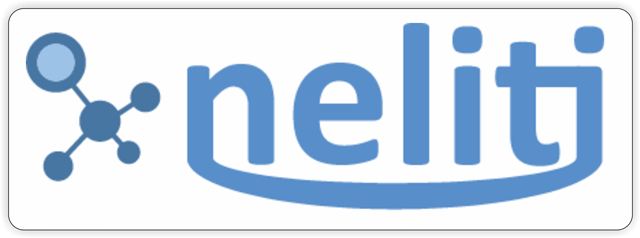A STUDY ON THE USE OF YOUTUBE AS A MEDIA TO PROMOTE STUDENTS’ AUTONOMOUS LEARNING
(1) Universitas Negeri Makassar
(2) Universitas Negeri Makassar
(3) Universitas Negeri Makassar
(*) Corresponding Author
Abstract
Keywords
Full Text:
PDFReferences
Amy, M. Johnson, et., al. (2016). Challenges, and solutions when using technologies in the classroom.
Anggrarini, N and Faturokhman, I. (2021) “An Analyze of Students’ Perception on the Use of Google Classroom in English Language Learning,” Cetta J. Ilmu Pendidik., 4(3), 607–618, doi: 10.37329/cetta.v4i3.1474.
Apuke, O. D., & Iyendo, T. O. (2018). University students’ usage of the internet resources for research and learning: forms of access and perceptions of utility. Heliyon, 4(12), e01052.
Azri, R.H., & Al-Rashdi, M.H. (2014). The Effect of Using Authentic Materials in Teaching. International Journal of Scientific & Technology Research, 3, 249-254.
Balcikanli, C. (2011). Long Live, YouTube: L2 Stories about YouTube in Language Learning. USA: Universal-Publishers
Benson, P. G. (2006). Autonomy in Language Teaching and Learning. Language Teaching, 40(1), 21-40. https://doi.org/10.1017/S0261444806003958
Benson, P. G. (2001). Teaching and researching autonomy in language learning. England: Pearson Education.
Budianto, L. (2014). Promoting Students’ autonomous learning through ICT based learning in ICP: A case study. Vol 9 No.2.
Candy, P.C. (1991). Self-Direction for Lifelong Learning: A Comprehensive Guide to Theory and Practice.
Creswell, J. W. (2012). Educational Research: Planning, Conducting, and Evaluating Quantitative and Qualitative Research Fourth Edition. Lincoln: Pearson.
Desrizon, Y. K. and Narius. D. (2017). Improving pronunciation in teaching speaking of senior high school students’ through English films. J. English Lang. Teach., 6(1), doi: https://doi.org/10.24036/jelt.v6i1.8534
Gay L. R, Airasian P.W, & Mills G. (2012). Educational research: Competencies for analysis and application. USA: Pearson Education, Inc.
Harmer, J. (2006). The practice of Language Teaching. Pearson Education. (Fourth Edition), 32(5), 405-420.
Hendar. (2014). Implementing Nunan's Autonomous Language Learning Model (Nallm) To EFL Students’ of Widyatama University. Journal Teaching and Learning in the 21st Century: Challenges for Lecturers and Teachers.
Jalaluddin, M. (2016). Using YouTube to Enhance Speaking Skills in ESL Classroom. English for Specific Purposes World, 17, 50.
Kelsen, B. (2009). Teaching EFL to the iGeneration: A Survey of Using YouTube as Supplementary Material with College EFL Students’ in Taiwan. CALL-EJ Online, 10(2). http://callej.org/journal/10-2/kelsen.html
Kusmaryani, W. Musthafa, B and Purnawarman. P. (2019) “The influence of mobile applications on students’ speaking skill and critical thinking in English language learning,” J. Phys. Conf. Ser., vol. 1193, pp. 1–7, 2019, doi: doi:10.1088/1742-6596/1193/1/01.
Little, D. (2004). Learner Autonomy, Teacher Autonomy, and the European Language Portfolio. UNTELE, Universite de Compiegne, March 2004, 1-3.
Manes, S. (2004). Architectural Representation Software: A Design Tool. International Journal of Architectural Computing. https://doi.org/10.1260%2F1478077043505432
Melvina, Lengkanawati, N. S., & Wirza, Y. (2021). The Use of Technology to Promote Learner Autonomy in Teaching English. Advances in Social Science, Education and Humanities Research, volume 546.
Miles, M. B., Huberman, A. M., & Saldaña, J. (2018). Qualitative data analy: A methods sourcebook. Sage publications.
Monkhouse, H., & Forbes, A. M. (2015). The Use of YouTube to Improve Students’ Acuity and Analytic Skills in Discussion of Issues in Music Performance. Literacy Information and Computer Education Journal, 6(3), 1964-1970.
Munadi, Y. (2010). Media Pembelajaran Sebuah Pendekatan Baru. Jakarta: Gaung Persada Press.
Nurhakim, Syarfuni, Sasmayunita, A. Thahir, S. Wahyuni, and S. Sibua. (2021). Speaking students’ improvement through critical thinking concepts And YouTube media. Psychol. Educ., 58(2), 9042–9049. doi: https://doi.org/10.17762/pae.v58i2.3593
Pazilah, F. N. P., Hashim, H., & Yunus, M. M. (2019). Using technology in ESL classroom: Highlights and Challenges. Creative Education, 10(12), 3205.
Rahayu, S. P. (2020). Watching Videos to Improve Autonomous Learning Behavior for University Students’ as Generation Z. Universitas Aisyiyah Yogyakarta: SAGA.
Rangarajan, K., Begg, K., & Somani, B. (2019). Online Digital Media: The Uptake of YouTube-based Digital Clinical Education (DCE). American Journal of Distance Education, 33(2), 142–150. https://doi.org/10.1080/08923647.2019.1582308
Sakkir, G., Dollah, S., & Ahmad, J. (2020). Students’ Perceptions toward Using YouTube in EFL Classrooms. Journal of Applied Science, Engineering, Technology, and Education, 2(1), 1-10. https://doi.org/10.35877/454RI.asci2125
Silviyanti, M. T. (2014). Looking into EFL Students’ Perceptions in Listening by Using English Movie Videos on YouTube. Studies in English Language and Education.
Sugiyono. (2012). Metode Penelitian Kuantitatif, Kualitatif, dan R&D. Bandung: Alfabeta
Supendra, D., & Amilia, W. (2020). The Use of YouTube to Increase the Students’ Autonomous Learning in the Online Learning Situation. Advances in Social Science, Education and Humanities Research, volume 563.
Utami. L. P. R. A, Suwastini, Dantes. G. R, Suprihatin C. T. & Adnyani. K. E. K. (2021). Virtual reality for supporting authentic learning in 21-st century language classroom. J. Pendidik. Tek. dan Kejuru., 18(1), 132–141. https://ejournal.undiksha.ac.id/index.php/JPTK/article/viewFile/32376/17649
Viberg, O. (2015). Design and Use of Mobile Technology in Distance Language Education: Matching Learning Practice with Technologiesa-in-Practice. Orebro University. http://du.diva-portal.org/smash/get/diva2:876615/FULLTEXT01.pdf
Wang, H., & Chen, C. W. (2019). Learning English from YouTubers: English L2 learners’ self-regulated language learning on YouTube. Innovation in Language Learning and Teaching.
Watkins, J., & Wilkins, M. (2011). Using YouTube in the EFL Classroom. Language Education in Asia, 2(1). https://leia.org/LEiA/LEiA%20VOLUMES/Download/LEiA_V2_I1_2011/LEiA_V2I1A09_Watkins_Wilkins.pdf
Zimmerman, B.J. (2002). Becoming a self-regulated learner: An overview. Theory into Practice, 41(2), 64 – 70.
Article Metrics
Abstract view : 199 times | PDF view : 27 timesRefbacks
- There are currently no refbacks.
Copyright (c) 2023 Widya Sari Ismail, Samtidar Samtidar, Syarifah Farahdiba

This work is licensed under a Creative Commons Attribution-ShareAlike 4.0 International License.
Editorial Office
Journal of Technology in Language Pedagogy (JTechLP)
Faculty of Languages and Literature Universitas Negeri Makassar
| Jalan Malengkeri Raya, Makassar, 90224 Kampus UNM Parangtambung, Indonesia | ||||
| [email protected] | |||||
| https://ojs.unm.ac.id/JTechLP/index | |||||
| 085299332119 (Chief Editor) | |||||
JTechLP is Indexed by Google Scholar, Garuda and Cross Reference
Address: Department of English Language Office, DC Building, UNM Parangtambung Campus, Daeng Tata Raya Street, Makassar, South Sulawesi, Indonesia





































